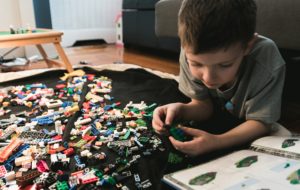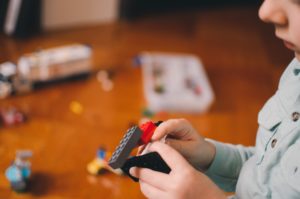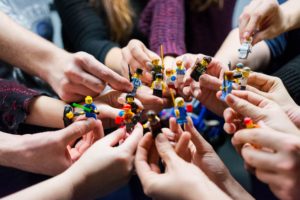Lego® therapy and how it can support your child’s therapy journey?
What is Lego® Therapy?

Lego®-based therapy was created by Dr LeGoff as a social development program for children and young people with Autism Spectrum Disorder (ASD) and other social communication difficulties. Lego® therapy is a form of ‘play based’ therapy. Through play-based therapy, children learn to communicate with others and express their feelings, increase their receptive and expressive language skills, learn a variety of ways of relating to others, modify their behaviour and develop their problem-solving skills. In Lego® therapy, our clinicians run a structured group where children work in teams of 3 or 4 to build a Lego® model where each child has a particular role. Lego® therapy can also be used to work on language targets and is an intervention for children with language difficulties.
How does a session look?
- Setting the rules – during the first session the children create simple rules that everyone understands. The rules are read at the beginning of each session.
- Allocate jobs- Engineer, Supplier, Builder and Foreman.
- Building- the children then work together to build the model. When needed, the facilitator is able to prompt the child, provide sentence structures, suggest compromises, and support positive interactions.
- Free Lego® play – the second half of the session involves the children playing with the built model. This unstructured play allows children to continue to explore relationships with others in the group, as well as continuing to develop their language and social communication skills outside of the structured activity.
What are the roles?

- Engineer
- The Engineer is in charge of reading the instructions from the instruction booklet. They are the only ones who can see them.
- They are in charge of describing the bricks to the Supplier.
- They explain how to build the model to the Builder.
- Supplier
- The supplier is in charge of finding the right bricks, following the Engineers instructions.
- Once the correct brick is located, they pass it to the Builder.
- Builder
- The builder is in charge of listening to the Engineer’s instructions and puts the bricks together.
- Foreman
- The foreman is in charge of making sure that the team is working together and communicating well.
- This role is only used when there is a group of 4.
What are the benefits of Lego®?

Lego® Therapy is research proven and shows a number of benefits. Some of the areas Lego Therapy focuses on includes:
- Expressive language skills – using language to provide instructions
- Receptive language skills – following directions
- Social communication – using non-verbal communication such as eye contact, facial expressions, etc.
- Social skills
- Joint attention
- Task focus
- Problem solving skills
If you are interested in Lego® therapy for your child or would like to know more information, feel free to contact our client care team via email on [email protected], phone (07) 3265 4495, or via our website.

Georgia West
Speech Pathologist
